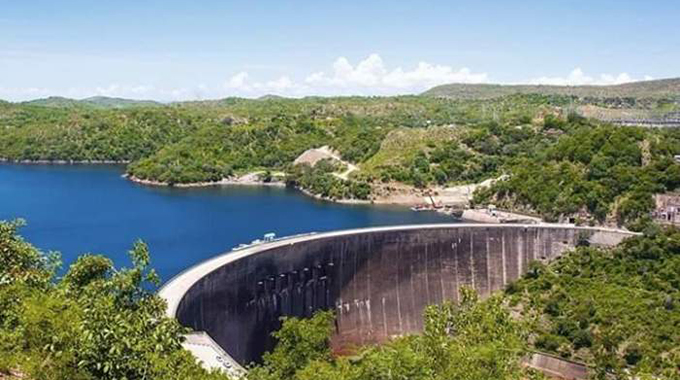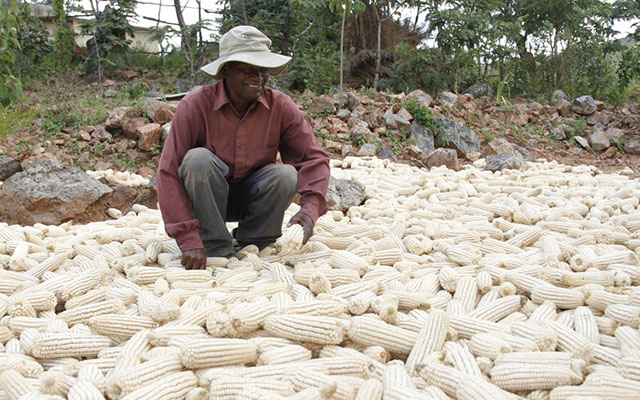EDITORIAL COMMENT : Unpacking the Kariba power-water rations

The two power stations at Kariba are being rationed this year to 61 percent of the water they used last year.
Zambezi River Authority (ZRA) has set the rations after looking at the flows, while better than last year, are still the third worst on record.
There is also the need to start building up the stored reserve in the lake.
Last year, the water level sunk to less than a metre above the minimum level required by inlets to the power stations, meaning that the two power authorities used more water than what flowed into the lake and ran down almost all the water stored in better years.
Successive droughts and below average seasons are the main cause for reduced water levels in the lake.
Most of the water in Lake Kariba comes from rainfall in eastern Angola and western Zambia, with southern Zambia and northern Zimbabwe providing very little.
So, the ZRA has to measure what is happening well upstream to make its plans.
The ration means, if Zesa of Zimbabwe and Zesco of Zambia divide up their 11 billion cubic metre rations into monthly rations of just under 1 billion cubic metres for each station, they will be able to generate more power than they each did in the last three months of last year.
This was when the Kariba stations were close to being run-of-river stations, using water that flowed into the lake each day, but without stored water.
But they will be generating less than they did earlier in the year when they were using water stored from better years far faster than they could hope to replace it.
ZRA is an independent body that has been given control of the dam and the lake and has authority to set rations.
This means it can take a longer view than the two authorities, who otherwise might be quite happy to use all their turbines when the floods come down in April and May and then be forced to cut back to just a trickle of power as flows decline.
Zimbabweans thus are going to have to live with load-shedding and power cuts.
Part of the problem is the lack of maintenance and part replacement at Hwange Thermal, rated at 920 megawatts, but only able to output at a little over 800MW if everything is working, thanks to a cooling system design fault.
But the station is generating only a little over 400MW. While excuses are made that the design life of the station is 25 years, these miss the point. There are thermal stations that have been going strong for decades.
The problem at Hwange is that units, or sections of units, that should have been scrapped and replaced were not scrapped and replaced.
A thermal unit, and Hwange has six at present, all dating from the 1980s, consists basically of a boiler that generates steam, a turbine that is spun by the steam and a generator that is spun by the turbine.
Hwange’s design, using pulverised coal as the fuel, and the abrasiveness of the coal, especially the lower quality component from the top of the seams, puts a lot of strain on the boilers and their associated coal feeds.
Many experts have estimated that if the boiler units last anything close to 25 years, Zesa is doing well.
By now, all six should have long been replaced.
The turbines and generators, in the cleaner part of the station will all last longer than 25 years, but not forever.
They too should have a replacement cycle and perhaps by now most should have been replaced.
If the planned maintenance and replacement schedules had been followed, Hwange would be generating twice what it is now.
The cooling problem is not that critical since under proper maintenance schedules one unit will often be down, with maintenance engineers replacing all worn parts or sections in a major overhaul or just doing the planned maintenance in a routine check.
The second error was one of the last of the First Republic when it was decided to proceed with the extension to Kariba South before the extension to Hwange Thermal, against the weight of advice that has been given for the past third of a century.
The Kariba extension does not provide more energy, even in a good rainfall year.
What it does is allow Zesa to cut back generation to a trickle at midnight and use the saved water to run all eight units at peak periods.
But for that to work, again in a normal year, is for another station to be available to meet the base load in off-peak periods, hence the need for Hwange Thermal to have been extended first and its older units rebuilt or refurbished.
Imports are available, a modest flow from Cahora Bassa in Mozambique and more from Eskom of South Africa.
But Eskom cannot feed Zimbabwe anything at all in peak periods, as it is short itself.
It can help out in off peak periods and especially in the middle of the night when it has a surplus unless it wants to go through expensive and complex unit shut downs.
Eskom has also been hit by poor maintenance, although for less time than Zesa, and the new management has warned South Africans that output will be lower for the next 18 months as a major maintenance catch-up is undertaken.
Zesa can take advantage of that a bit, by cutting Kariba South back to the minimum in the middle of the night and using the resultant modest saving of the daily water ration to run another unit or two in peak periods.
Bringing some of the planned solar on stream as quickly as possible will help, not only in meeting demand in sunny periods, but if there is enough solar, to cut back Kariba when the sun shines to give a larger output at peak demand when the sun is not shining.
But until the 600MW extension to Hwange is finished, and while it was one of the first projects approved by the Second Republic, this sort of construction is not instant, Zimbabweans are going to have to continue being very careful.
And even when it is on stream, until the earlier six units at Hwange are rebuilt, the planned solar stations are on line and the second large planned thermal is producing, Zimbabwe is going to have a generation deficit for at least a part of each day.







Comments